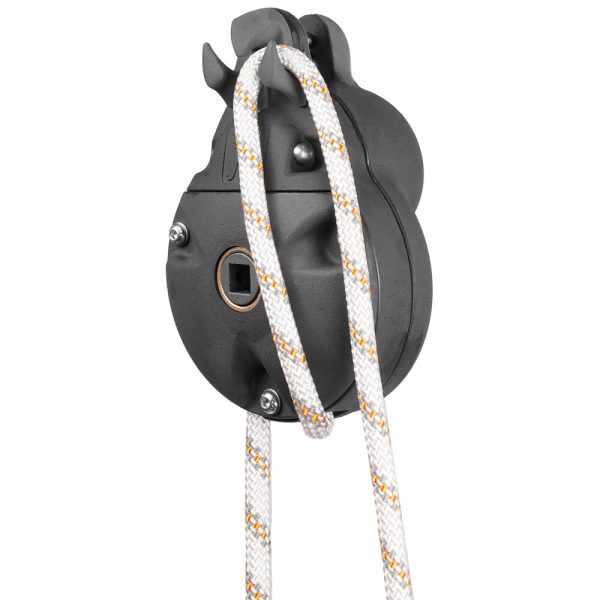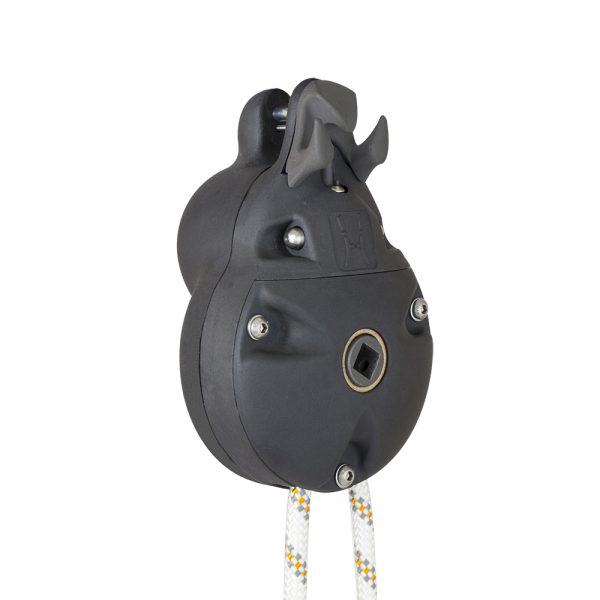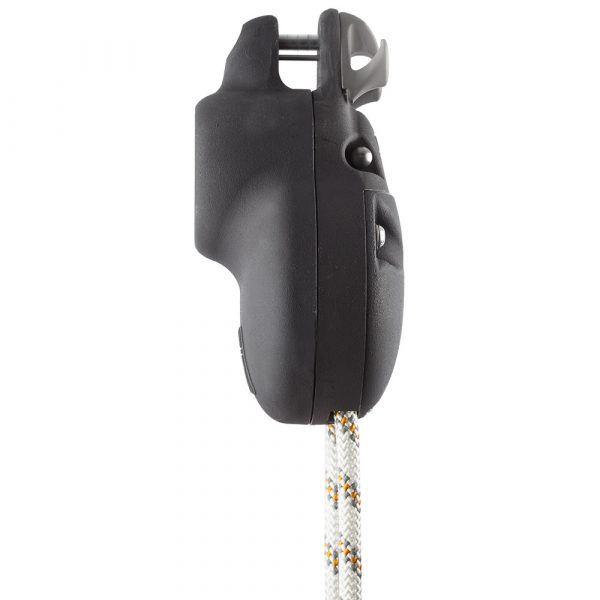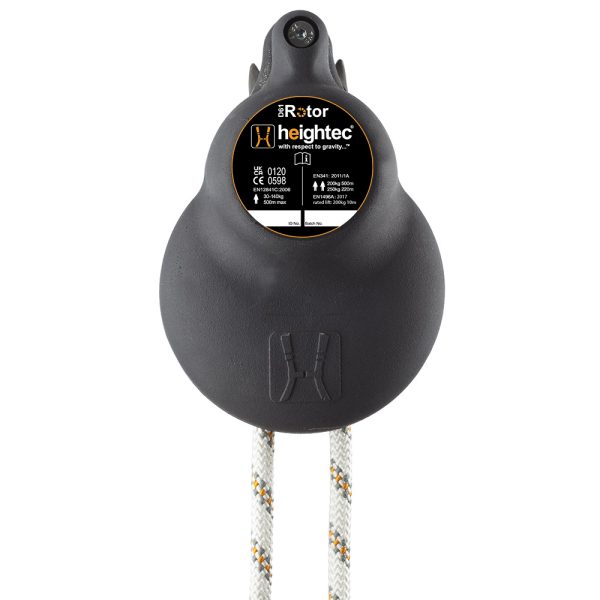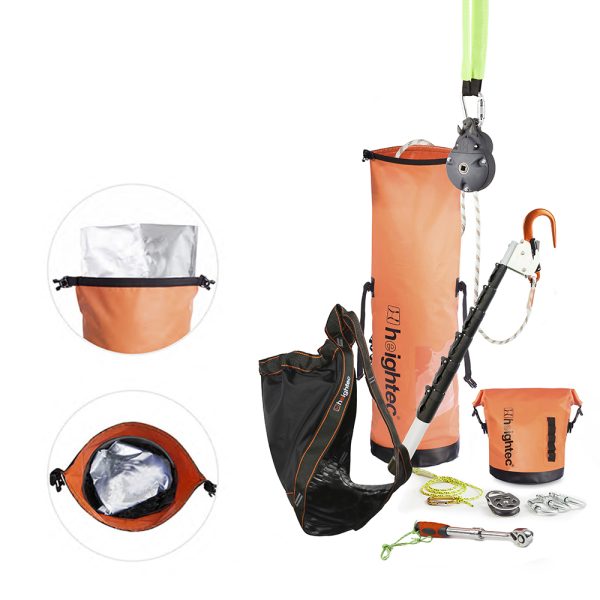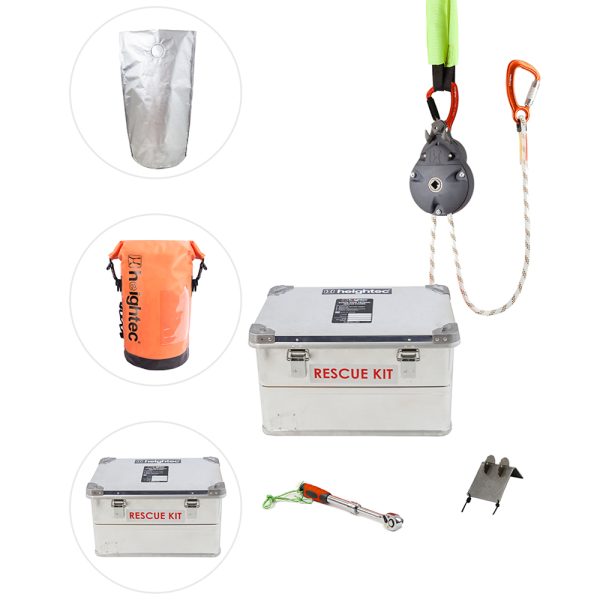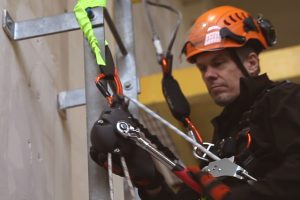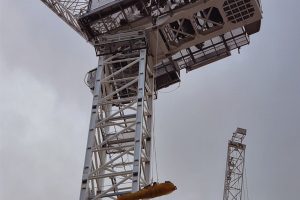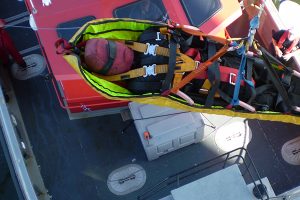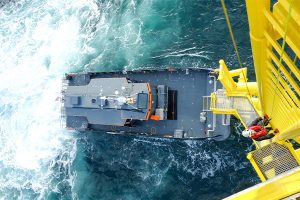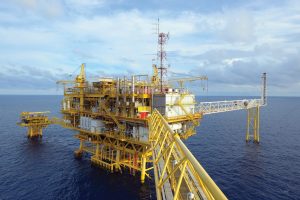The ROTOR rescue and evacuation descender is designed for lifting, lowering and evacuating, with multiple evacuee capability.
It is simple and intuitive to use, incorporating a range of operation and safety features to aid users.
The ROTOR is a constant rate descender with a low profile body and no external moving parts, preventing the risk of snagging which could interrupt a descent.
The ROTOR rescue and evacuation descender features attachment load point indicator that shows if device has been used.
The device has push button mode selection for lifting or lowering in either direction – central neutral position for lowering, left/right position for lifting mode.
When set in lowering/evacuation mode, descent is automatic. Friction points can be used to provide additional control for lowering a casualty.
Detachable ratchet handle is used to lift in either direction. Ratchet locking mechanism holds the load if the handle is released.
Locking mechanism is engaged by simple push button, which is recessed to protect against accidental operation. ‘Free running’ position can be engaged for evacuation /descent use.
Automatically controls descent speed to between 0.7 m/s and 1.7 m/s, depending on load, without the need for manual operation.
High rated load with long descent distance:
Load Max. descent distance Descent speed
140 kg 4500 m 0.7 m/s
200 kg 500 m 1.0 m/s
250 kg 220 m 1.7 m/s
Maximum descent load (rescue) 250 kg.
Maximum lifting load 200 kg.
Supplied fitted with 9.5 mm rope giving 10:1 safety factor with 250 kg. Maximum rope length 500 m.
Device can be attached to an anchor point (passive) or direct to the user harness (active).
The ROTOR constant rate descender is not subject to a specific lifetime, however it must be serviced and replacement rope fitted every 10 years. Full service support available.
The ROTOR is integral to our rescue systems listed below and is available in variouse rope lengths:
- ROTOR Evaq System – basic system for rescue & evacuation from height e.g. VNA, distribution centres, beam cranes.
- ROTOR Evaq ProSeal Evacuation System – basic system for rescue & evacuation from height e.g. VNA, distribution centres, beam cranes. Hermetically sealed, giving a 10 year lifespan with supremely simple inspection process.
- RescuePack WTG Rescue System – for self-evacuation or recovery of a casualty from tall structures, including wind turbines
- RescuePack WTG ProSeal Rescue System – for self-evacuation or recovery of a casualty from tall structures, including wind turbines. Hermetically sealed, giving a 10 year lifespan with supremely simple inspection process.
- RescuePack TC Tower Crane Rescue System – for self-evacuation or recovery of a casualty from tower cranes.
Not for sale individually – Component part of RescuePack rescue systems.
Patented GB 2 515 341
Commodity Code: 7326909890
Country of Origin: UK
![]()
